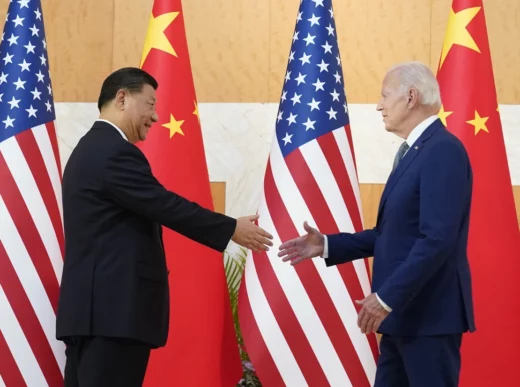In a historic executive order signed on September 5, 2025, President Trump has officially renamed the Department of Defense to the “Department of War,” marking the most significant restructuring of American military nomenclature since the National Security Act of 1947. This unprecedented move signals a fundamental shift in how the United States approaches national defense and military strategy in the 21st century.
The executive order, which takes effect immediately, reverses nearly eight decades of military organizational structure and returns to the more direct terminology used prior to 1947. According to sources within the White House, the decision reflects a broader strategic realignment aimed at projecting American military strength more clearly to both allies and adversaries.
Historical Context and Significance
The Department of War was the original name for America’s military department from 1789 until 1947, when the National Security Act restructured the military establishment and created the Department of Defense. The name change to “Defense” was intended to reflect America’s post-World War II role as a global peacekeeping force rather than an aggressive military power.
However, critics of the 1947 nomenclature have long argued that the term “Defense” inadequately describes the full spectrum of American military capabilities and global responsibilities. The Heritage Foundation has published extensive research supporting a return to more direct military terminology, arguing that clarity in language leads to clarity in strategic thinking.
“The renaming to Department of War represents a return to honest discourse about American military power. We are not merely defending; we are actively shaping the global security environment through strength and decisive action.” – Senior Defense Official
Strategic Implications and Military Doctrine
The rebranding comes alongside a comprehensive review of American military doctrine, with emphasis on what administration officials describe as “peace through strength” principles. The newly renamed Department of War will maintain all existing functions while adopting a more assertive posture in international affairs.
Military strategists at the RAND Corporation have analyzed the potential implications of this nomenclature change, noting that symbolic shifts in military organization often precede substantive policy changes. Their preliminary assessment suggests that the renaming may signal increased military spending and a more aggressive foreign policy stance.
The Center for Strategic and International Studies has published a comprehensive analysis of how the name change might affect military recruitment, public perception, and international diplomatic relations. Their research indicates that clearer military terminology could enhance public understanding of defense priorities and strategic objectives.
Congressional Response and Legislative Implications
The executive order has prompted immediate responses from Congress, with members from both parties expressing varying degrees of support and concern. The House Armed Services Committee has announced plans for hearings to examine the legal and practical implications of the name change.
Senator Jim Inhofe, ranking member of the Senate Armed Services Committee, stated: “While I support strong national defense, we must carefully consider the broader implications of this symbolic change. The American people deserve transparency about how this affects our military capabilities and strategic objectives.”
The House Appropriations Committee has indicated that the name change will require extensive review of existing legislation, as thousands of federal statutes reference the “Department of Defense.” Legal experts estimate that comprehensive legislative updates could take months to complete.
International Reactions and Diplomatic Considerations
The announcement has generated significant international attention, with NATO allies expressing both support and concern about the implications for transatlantic security cooperation. European defense ministers have requested clarification about how the name change might affect existing military partnerships and joint operations.
The State Department has been conducting intensive diplomatic outreach to reassure allies that the name change does not signal a shift away from collective security arrangements. Secretary of State officials emphasize that American commitment to international partnerships remains unchanged despite the new nomenclature.
Foreign policy experts at the Council on Foreign Relations have published analysis suggesting that the name change could complicate diplomatic relations with countries that prefer America’s “defensive” military posture. However, they also note that some allies may welcome clearer American leadership in global security affairs.
Military Leadership and Organizational Changes
The Joint Chiefs of Staff have expressed full support for the name change, with Chairman General Mark Milley stating that the new designation better reflects the military’s comprehensive mission set. The renaming will require extensive updates to military protocols, documentation, and organizational structures across all service branches.
The U.S. Army, Navy, Air Force, Marine Corps, and Space Force will all undergo branding updates to reflect their new organizational parent. Military officials estimate that the transition will require 12-18 months to complete fully.
The Defense Information Systems Agency has begun the massive task of updating digital infrastructure, websites, and communication systems to reflect the new department name. This technological transition represents one of the largest rebranding efforts in federal government history.
Budget and Resource Implications
The name change comes with significant financial implications, as the Department of War Comptroller estimates that rebranding costs could exceed $500 million. This includes updating signage, letterhead, uniforms, vehicles, and digital systems across the entire military establishment.
The Government Accountability Office has announced plans to audit the rebranding costs to ensure taxpayer funds are used efficiently. Their preliminary assessment suggests that the transition could provide opportunities to modernize outdated systems and improve operational efficiency.
Defense contractors and suppliers will also need to update their systems and documentation to reflect the new department name. Industry analysts estimate that private sector compliance costs could reach hundreds of millions of dollars, though these expenses will be absorbed by existing contract provisions.
Public Opinion and Cultural Impact
Initial polling by Gallup and Pew Research indicates that American public opinion on the name change is divided along partisan lines, with 67% of Republicans supporting the change and 71% of Democrats opposing it. Independent voters remain split, with 48% supporting and 52% opposing the renaming.
Military families and veterans groups have expressed mixed reactions to the change. The Veterans of Foreign Wars has endorsed the renaming, arguing that it better reflects the military’s mission, while the AMVETS organization has called for more public consultation before implementing such significant changes.
Cultural critics and historians have noted that the name change represents a broader shift in American military culture, moving away from the post-World War II emphasis on defensive operations toward a more assertive global posture. The Smithsonian Institution has announced plans for an exhibition examining the evolution of American military nomenclature.
Implementation Timeline and Future Outlook
The transition to the Department of War designation will occur in phases over the next 18 months. Phase One involves updating official documentation and legal references, while Phase Two focuses on physical infrastructure and signage. Phase Three will complete the digital transition and public-facing communications.
Military academies, including West Point, Naval Academy, and Air Force Academy, will incorporate the name change into their curricula and institutional identity. Educational materials and historical references will be updated to reflect the new organizational structure.
The coming months will reveal whether this rebranding effort enhances American military prestige and effectiveness or becomes a costly distraction from more pressing defense priorities. What is certain is that September 5, 2025, will be remembered as a pivotal moment in American military history, marking the return to a more direct and unambiguous approach to national defense nomenclature.
As the transition unfolds, military leaders, policymakers, and the American public will closely monitor the practical effects of this symbolic change. The success of the Department of War rebranding may well influence future efforts to modernize and clarify American government institutions for the challenges of the 21st century.
















